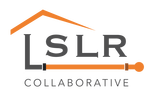Coordination of Replacement Activity
|
|
On-site coordination of replacementThere are multiple models for on-site coordination. Historically, few water line repairs have necessitated real-time coordination between a residential customer and water utility field activities. In most instances when a utility is undertaking work, water flow to the home is stopped, a repair is effected, and the customer is apprised of return to service, often by a door hanger as the repair can take place when the customer is not present. Conversely, a plumbing repair by the customer is undertaken by the customer’s plumber under the supervision of the customer, without the involvement of the water utility.
In the case of full lead service line (LSL) replacement, a great emphasis is placed on close coordination in real-time:
Source: DC Water
|
Example communications materials
Utility coordination with the customer
|
Successful LSL replacement initiatives will need to effectively engage consumers. Complete LSL replacement involves multiple steps and considerable coordination with individual customers. An effective effort will make this process easy for the customers to engage, and consider the challenges of the customer scheduling time to talk about the service line.
Replacement efforts will benefit from providing customers a “one-stop” option with access to staff or contractors that can work within customer’s constraints and communicate effectively with customers. Approaches that simplify the process for customers with respect to paying for line replacement, identifying and organizing contractors, and coordinating testing will improve customer engagement. |
Learn more: |
Whether the utility or customer initiates replacement, the community’s LSL replacement effort should include providing the customer:
- Information about the health risks posed by lead,
- Any community requirements for the service line replacement,
- Flushing instructions,
- Information on additional protective measures to take and ways the community is assisting customers (e.g., providing a POU filter), and
- Information on water quality testing conducted by the community and other testing resources.
Utility initiated coordination
- Prior notice of planned projects (45 days in advance to property owner),
- Informational point-of-contact for project (property owner / utility customer / property owner’s plumber / impacted residents),
- Additional notice prior to actual planned work affecting service line (day prior) (property owner / utility customer / property owner’s plumber / impacted residents),
- Point-of-contact during construction (on-site) (property owner / utility customer / property owner’s plumber / impacted residents), and
- Post-construction instructions to flush and/or use a POU filter.
Customer initiated coordination
|
Utility websites often provide instructions, points-of-contact, etc. for new services. This type of information is almost always available in written form from the utility or governing body. These materials are intended to guide developers, plumbers, and customers who are installing a new service.
Such materials frequently address:
|
Example Materials: |
Construction activities must comply with numerous requirements. Examples specific to water service installation beyond the above items include:
- Assuring adequate water flow,
- Assuring compliance with electrical code (bonding),
- Disinfection of the installed piping, and
- Record retention for the service connection.
Consequently, local governments have started creating “one-stop” customer service centers, and this trend has extended to water utilities. A customer wishing to install or modify a service line interacts by phone or in person with a service desk that makes sure a new activity addresses all relevant requirements and is undertaken by an appropriately skilled individual.
Some utilities have processes for “approving” plumbers to do work relevant to utility infrastructure, including service lines. This approval process includes training on similar material to above and coordination practices particular to that utility.
Coordination with other utilities
|
Any utility conducting work on buried infrastructure could come in contact with LSLs. Communities that are actively pursuing full LSL replacement will need a mechanism for other utilities engaged in work in the public right-of-way to be aware of expectations for removing LSLs in their entirety and providing necessary safeguards for affected households.
Key steps include:
|
Learn more: |
|
In individual communities the utilities will need to work within an agreed upon protocol for who is responsible for what:
|
Examples of utility coordination: |



